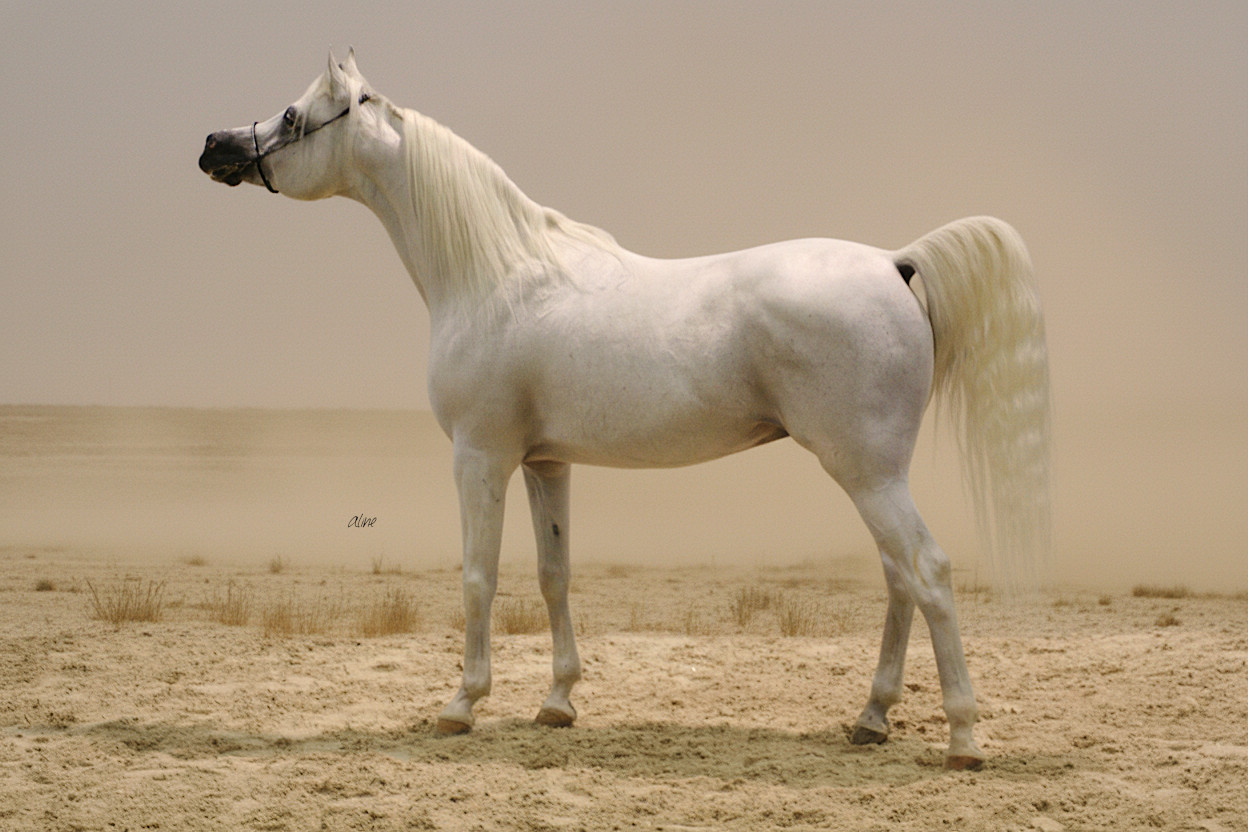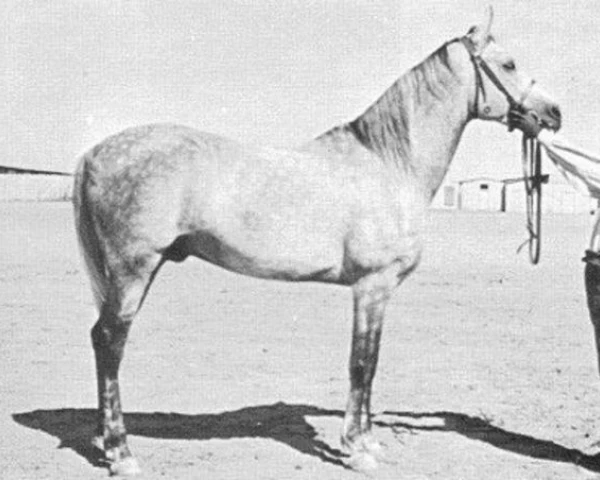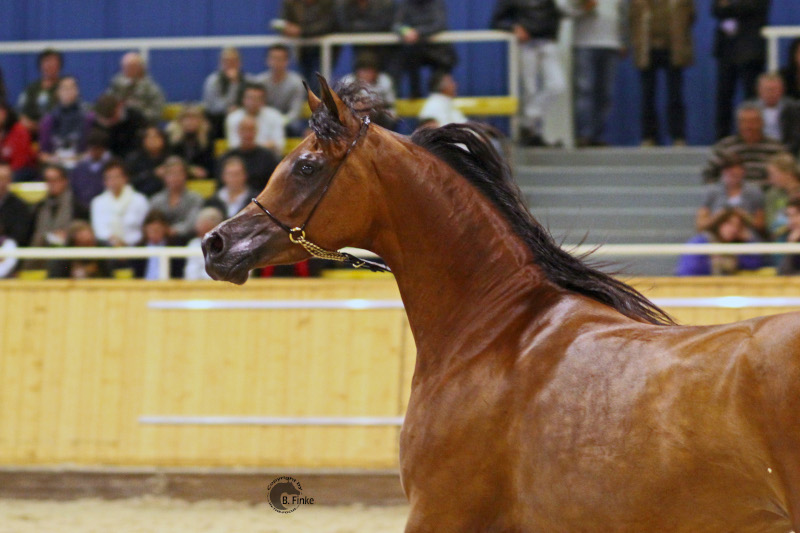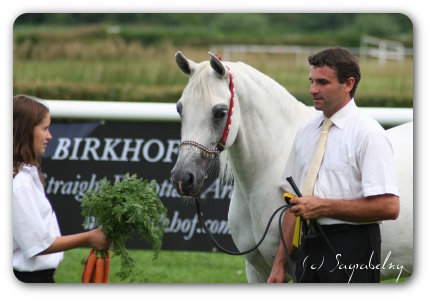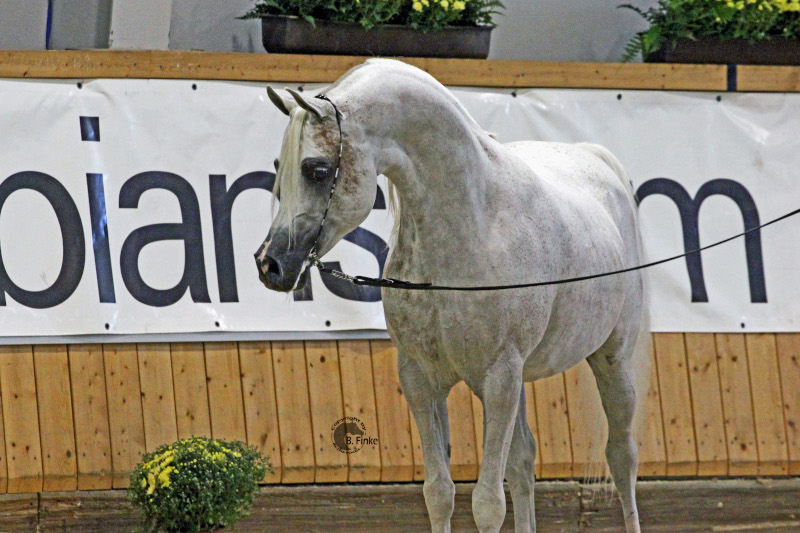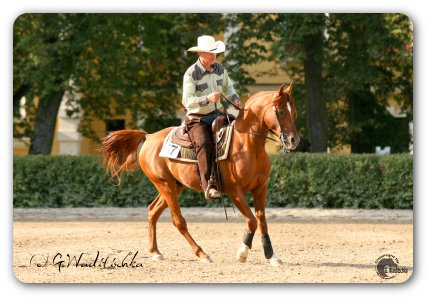Kasztelanka 
![]()
The bay Polish bred mare Kasztelanka was sired by Koheilan I. He was a grey stallion born in 1922 at Babolna Stud. As a son of Koheilan IV, Koheilan I decended to the desert-bred stallion Koheilan Adjuze. His dam was 10 Gazal, a grey Babolna bred mare of Kuhaylat al-Sharif strain. Koheilan I was sold to Janow Podlaski in 1924, where he became chief sire and produced influential offspring, including the stallion Lowelas, who contributed to both Trakehner and Arabian breeding programs. Koheilan I sired Karmen II, whose daughter Karramba helped ignite the Polish Arabian boom in the UK. Another daughter of his was Jaskolka II, who was the dam of Wilga. Wilga later brought Carmen and Arwila, two Polish broodmares of excellence.
Later, Koheilan I -renamed to Koheilan VIII - was brought back to Babolna in 1937, where he sired the mare Khema (x 203 Ajeeb) who was purchased by Getraude Griesbach of Achental stud, Germany where she became a foundation mare. .
Kasztelanka’s dam was Bialogrodka. Bialogrodka was bred by Prince Roman Sanguszko at Guminska Stud.
Her sire was Orjent, a son by desert bred stallion Antar, and out of Republika.
Bialogrodka’s dam Pojata was by Muzafer-Pasha whose sire was Rymnik. Rymnik was grandsire of legendary Skowronek through his daughter Jaskolka.
Born at Janow Podlaski, the Koheilan I daughter was taken over into the stud's broodmare band where Kasztelanka brought three registered foals: a stallion and a mare by Hardy, and a bay stallion with the unpronounceable name (at least when you are not family with the Polish language) Towarzysz Pancerny (by Enwer Bey). Towarzysz Pancerny is the Polish term for “Iron Comarade”. During the chaos of WW II, the stallion with the unpronounceable name came to Germany – ridden by a corporal. In Germany, he was finally acquired by Gertraude Griesbach for her Achental stud. She renamed him 'Halef'.
In 1938, Henry Babson visited Poland to purchase Arabian horses for his stud in the United States. He selected the mares Azja IV, the Oaks winner Kostrzewa and Kasztelanka. Although Kasztelanka had a modest racing career compared to her half-sister Kostrzewa, she became more influential in Arabian breeding in the United States.
After Kasztelanka gave birth to Warsaw by Ofir, Henry Babson bred Kasztelanka to his chief sire, the Straight Egyptian stallion Fadl (1930-1963) in 1942. The next year, she foaled a colt named Fadheilan. He would later have a significant impact on American Arabian breeding through one of his sons. This son was Fadjur (x Bint Sahara).
Known as 'The Fabulous Fadjur', this bay 1952 stallion was renowned for his charisma, correct conformation, and athletic ability. He became a cornerstone of the Arabian breed in the United States. Standing at Jack Tone Ranch, Fadjur sired over 700 foals, many of which excelled in both halter and performance disciplines.
After a short stay at Traveler’s Rest Farm of Mr. Dickinson where she was sold to in 1946, Kasztelanka spent her final years n Cuba where she was exported to three years later.
Info
| bay mare | |
| foaled: 1929-00-00 | died: n/a |
| sire: KOHEILAN I | sireline: Koheilan Adjuze db (via Koheilan I) |
| dam: BIALOGRODKA | damline: Elsissa db 1870 (branch: Elsissa) |
| strain: Hadbah Enzahiyah | |
| additional information: imported from Poland to England and on to the US in 1939 by Henry B Babson, Chicago, Illinois | |
| Breeder: Janow Podlaski Poland | |


